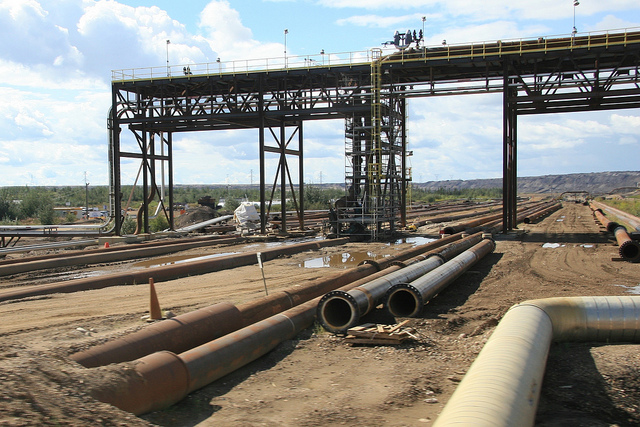Earlier this month, the federal government released legislation to update environmental assessment laws and revamp the National Energy Board (NEB). The changes proposed in the new legislation were much anticipated, and long overdue. In yesterday’s federal budget, the government has further proved their intention to make these changes happen, with a commitment of $1 billion over five years to implement the new legislation.
Over the years, it has become clear that the NEB is not equipped to usher Canada into its next phase of low-carbon energy regulation—a phase that must be more transparent, inclusive and capable of supporting Canada’s long-term climate change objectives. We’ve been tracking this closely, and last year released our vision for a modern energy regulator. Bill C-69 (the recent legislation), announcing the Canadian Energy Regulator Act and the Impact Assessment Act, presents the Government of Canada’s proposal for ensuring the country’s regulatory bodies and processes are up to the challenges of the 21st century.
How well does the new Canadian Energy Regulator (CER) — the body that will replace the NEB — meet our expectations and vision?
Improved project assessment process
Nudging federal energy decision-making into the 21st century requires an improved project review process to ensure that assessments are rigorous, evidence-based, transparent, fair, and inclusive. The new legislation takes several steps in this direction.
It makes the new Impact Assessment Agency of Canada the responsible authority for all federal impact assessments. Moving this responsibility from the NEB is a big win for consistent and credible impact assessments. The new legislation also broadens the factors that are considered in assessment. Rather than just weighing the biophysical impacts of a project, social and health impacts will now be considered as well. It also requires a public decision statement that explains how five pre-defined factors (including climate impacts) were considered. The decision will still rest on an under-defined “public interest test” so the steps toward transparency, although welcome, may not be enough to ensure accountability and restore public trust.
The legislation is based on a principle of open and inclusive processes and it removes existing barriers for public participation, specifically provisions that interveners be “directly affected” by the project. Importantly, it also introduces a pre-planning stage to establish relationships and identify issues early in the process. However, a portion of the new funding from the budget should be allocated to ensuring that this principle is translated into practice and the public has the resources and tools to navigate public hearings and have their voices heard.
The new legislation also includes several provisions to facilitate partnership with Indigenous jurisdictions and include Indigenous knowledge and worldview. We fully support the principle of reconciliation and its enactment in project assessment and look to Indigenous groups to judge the adequacy of the proposed changes.
Aligning climate and energy policy
A 21st century energy regulator must have the mandate and tools to ensure that energy decision-making is in step with national and sub-national climate policies and that it does not impede our ability to meet our climate commitments through the Paris Agreement.
Both the Canadian Energy Regulator Act and the Impact Assessment Act include climate considerations. Climate impacts are part of a broadened scope of assessment and international climate obligations are one of the factors that must be included in the final decision statement. This is a considerable step forward. However, we need to ensure that climate change is integrated throughout the assessment process and, through the revised project list, ensure that high carbon projects are assessed under the new legislation.
Moving forward
Canadians will continue to demand action on climate change and a place for public and Indigenous voices in decision-making. The proposed Canadian Energy Regulator proves that the government understands the issue and intends to address it. However, the legislation needs to be strengthened in key areas to ensure that it meets these demands and, ultimately, rebuilds public trust.
In conjunction with the new legislation the government announced a strategic impact assessment of climate change. This will provide important details for implementing the new legislation and the Pan-Canadian Framework on Clean Growth and Climate Change. Although the strategic assessment is not part of the new legislation, it is critical that the Impact Assessment Act make it mandatory to consider the outcomes of this, and other strategic and regional impact assessments, in the review of individual projects.
In addition, the Canadian Energy Regulator’s data and forecasting responsibilities should be transferred to a new, independent Canadian energy information agency. There is an urgent need to improve the quality and completeness of energy data collection in Canada and it is critical that these functions are performed by an agency that is viewed as impartial and un-biased, on par with Statistics Canada, rather than by the Canadian Energy Regulator. Both the new legislation and the budget were silent on this issue.
Finally, we need to ensure that energy supply and demand forecasts, that are widely used as the basis for policy-making and capital investment, reflect a scenario in which Canada and the world take progressively more stringent action to limit global GHG emissions.
We look forward to working with the government and the newly formed CER to ensure these issues are addressed through the implementation of the legislation, especially in light of yesterday’s budget commitment.









